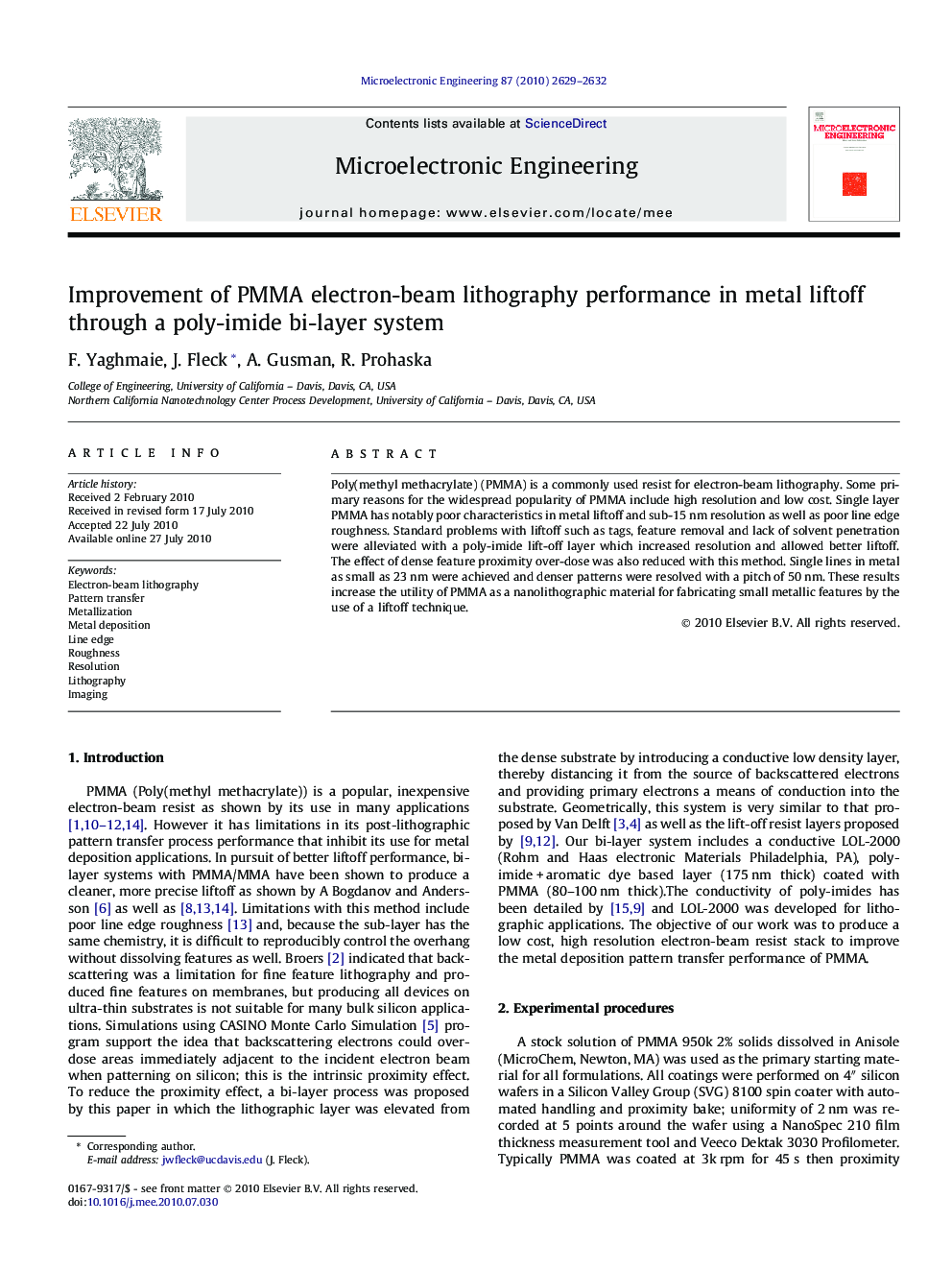| Article ID | Journal | Published Year | Pages | File Type |
|---|---|---|---|---|
| 543106 | Microelectronic Engineering | 2010 | 4 Pages |
Poly(methyl methacrylate) (PMMA) is a commonly used resist for electron-beam lithography. Some primary reasons for the widespread popularity of PMMA include high resolution and low cost. Single layer PMMA has notably poor characteristics in metal liftoff and sub-15 nm resolution as well as poor line edge roughness. Standard problems with liftoff such as tags, feature removal and lack of solvent penetration were alleviated with a poly-imide lift-off layer which increased resolution and allowed better liftoff. The effect of dense feature proximity over-dose was also reduced with this method. Single lines in metal as small as 23 nm were achieved and denser patterns were resolved with a pitch of 50 nm. These results increase the utility of PMMA as a nanolithographic material for fabricating small metallic features by the use of a liftoff technique.
